Recycled oyster shells are being used by a scientist and traditional owners to try and restore the biodiversity and water quality of Moreton Bay in South East Queensland.
And first trial results are showing signs the project is working.
Oysters are known as the ‘kidneys of the coast’ due to their natural filtration properties. They improve water clarity by drawing in particles and sending them to the seafloor.
Once grown, each oyster can filter up to 100 litres of water a day.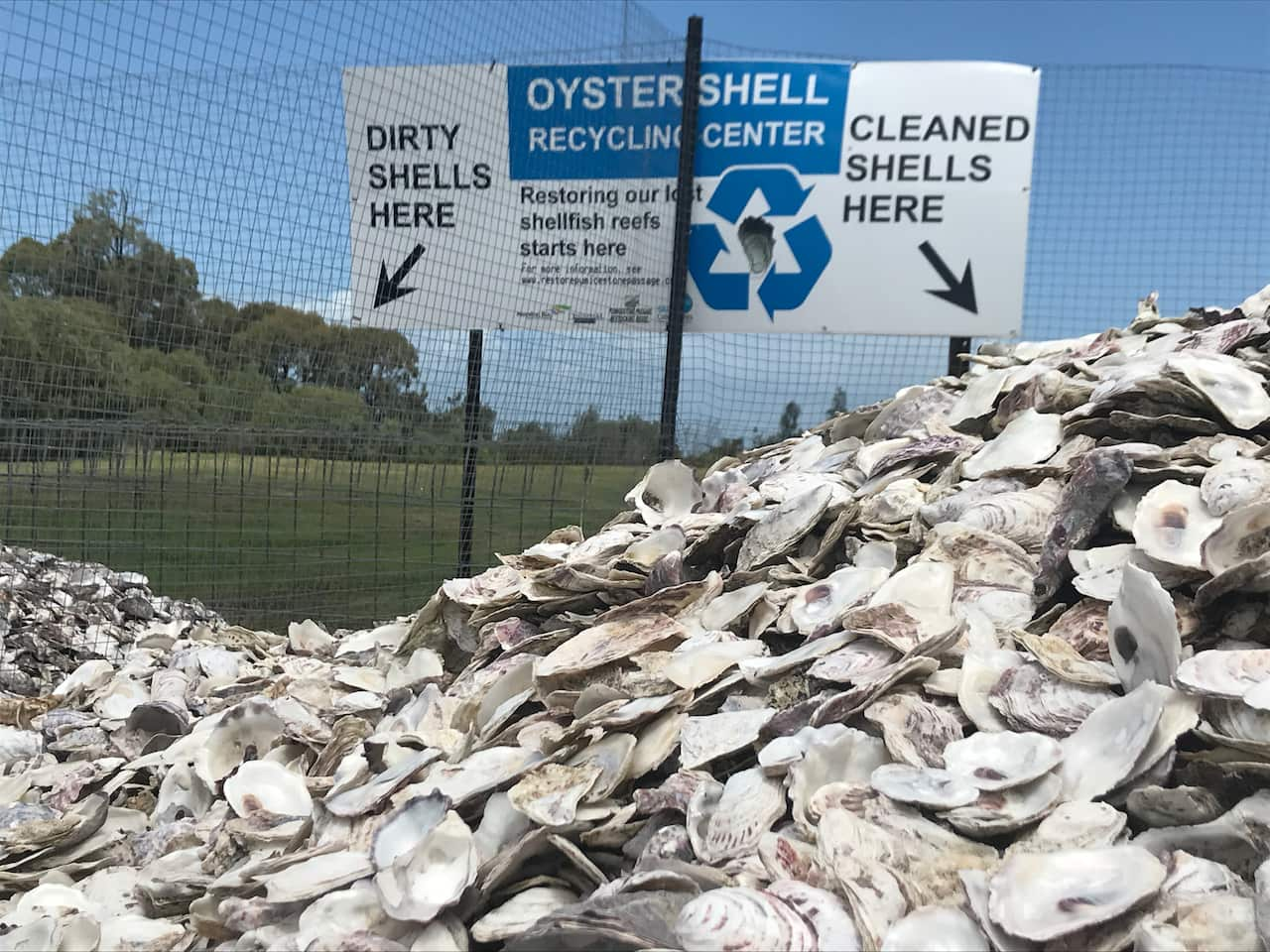 Moreton Bay's oyster industry became unviable 20 years ago, but Australia still has a huge appetite for them. As a result, in the town of Ningi, shell waste from New South Wales, Tasmanian and South Australian oysters is being recycled.
Moreton Bay's oyster industry became unviable 20 years ago, but Australia still has a huge appetite for them. As a result, in the town of Ningi, shell waste from New South Wales, Tasmanian and South Australian oysters is being recycled.

Oyster recycling for for restoration of lost reefs in Pumicestone Passage at Bribie Island. Source: Stefan Armbruster
The recycled shells are sterilised for four months to prevent the introduction of pests and diseases before they are reintroduced into the estuary as restored reef substrate.
It is a project combining traditional knowledge and modern science that could one day dramatically improve the health of Australia’s coastal waters.
Oystering was once of Queensland’s most important colonial-era industries. Moreton Bay oysters fed the demand from Sydneysiders and reefs were dredged for lime used to build early Brisbane.
But devastating floods 120 years ago after mass land clearing in the region smothered the bay’s over-exploited reefs with mud, eventually leading to habitat extinction.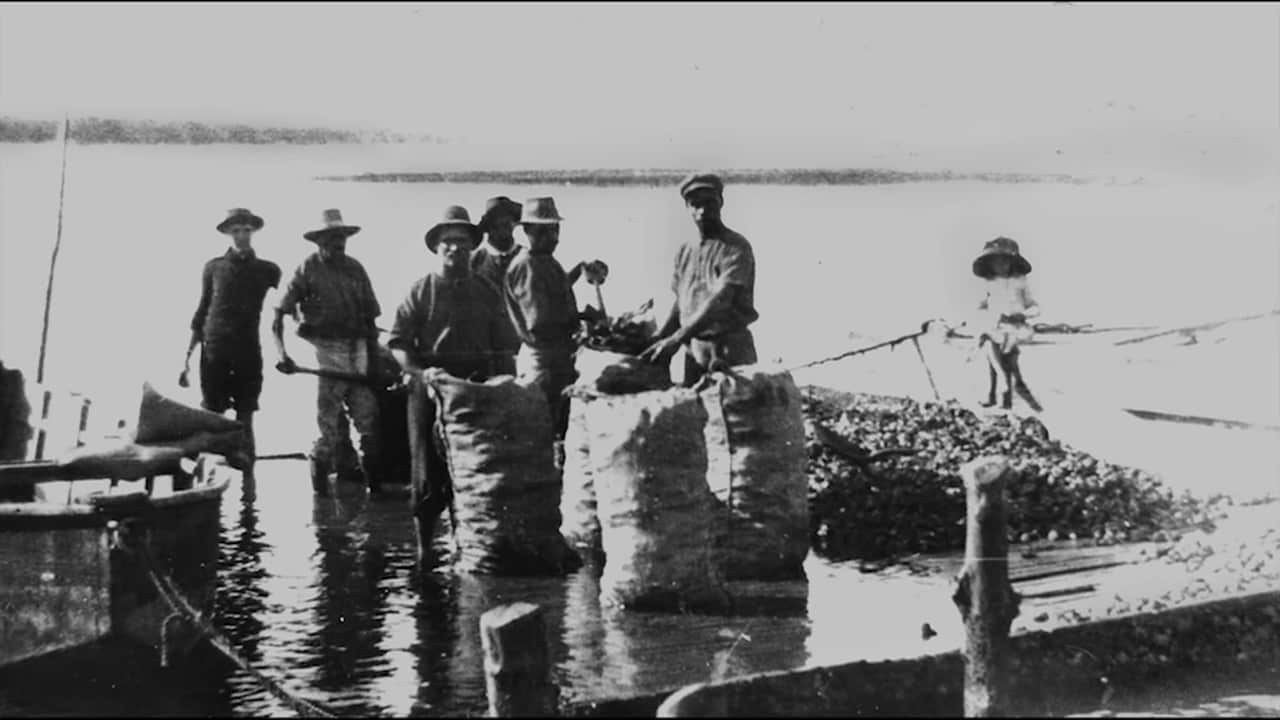 Marine biologist Ben Diggles runs the Pumicestone Shellfish Reef Restoration project.
Marine biologist Ben Diggles runs the Pumicestone Shellfish Reef Restoration project.

Source: Supplied
He told SBS News: “We’re getting a large amount of nutrients from the sewage and a large amount of sediment from the floods, so that’s very toxic for the environment.”
“We’ve lost all that filtration effect they once had and their function in the ecosystem as it once was is now extinct … today [Moreton Bay] is a shadow of its former self.”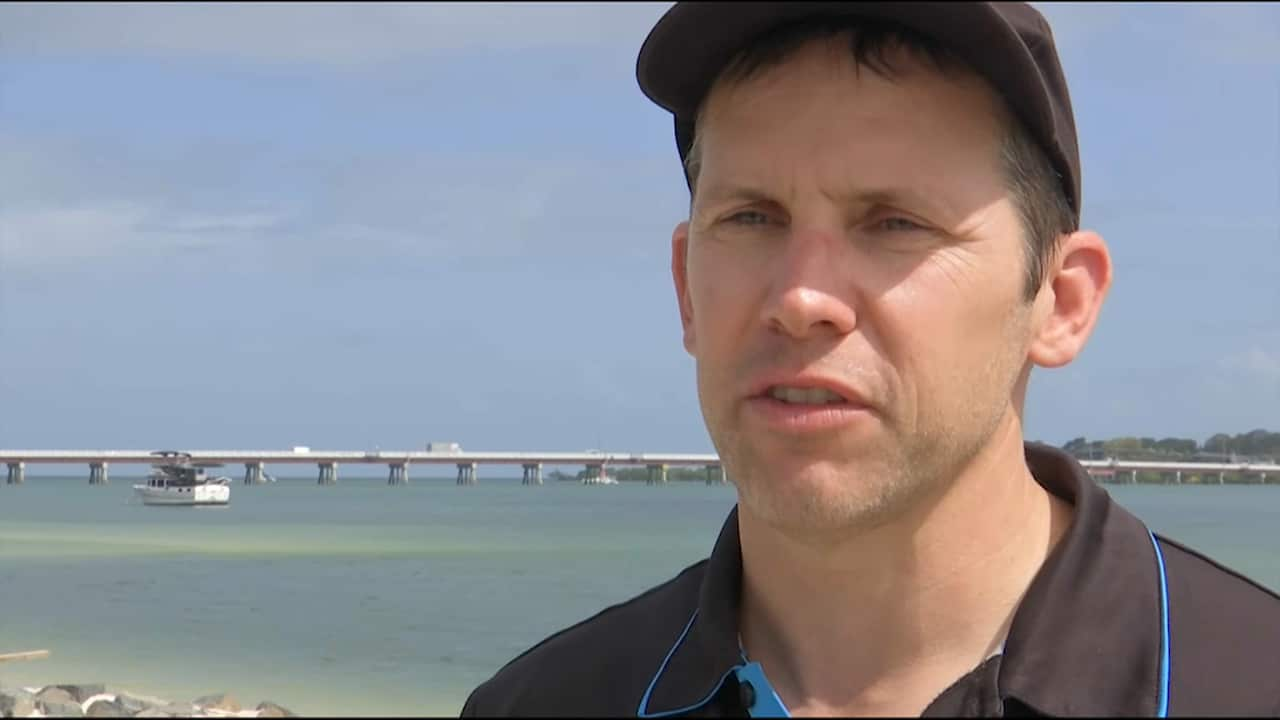 Third generation local oysterer Steve Clark now shucks shells freighted in from Sydney.
Third generation local oysterer Steve Clark now shucks shells freighted in from Sydney.

Marine biologist Ben Diggles. Source: SBS News
“My grandad started 1956, Dad took over in the early 2000s but he had to stop,” said the owner of Oysters on Bribie, now a local wholesaler.
“Water quality forced us out from growing oysters there; it’s the water quality that lets us down.”
Shucked shells from the wholesaler are now donated to the reef restoration project and are stockpiled at the Ningi council dump by local traditional owner and Joondoburri elder Fred Palin.
He says the project has come to the right place.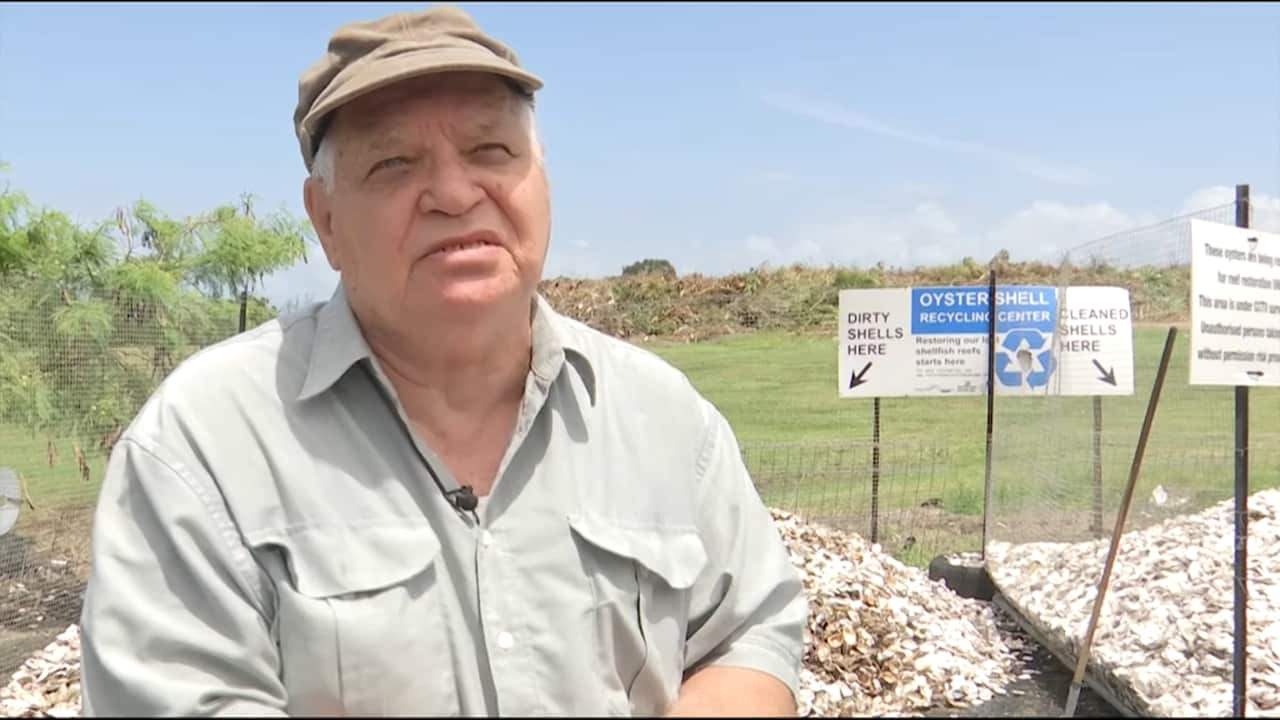 “'Ningi' is the Aboriginal name for 'oysters' and the area is actually called ‘ningi ningi’ which means ‘plenty of oysters’,” he said.
“'Ningi' is the Aboriginal name for 'oysters' and the area is actually called ‘ningi ningi’ which means ‘plenty of oysters’,” he said.

Joondoburri elder Fred Palin. Source: SBS News
“This is the restoration of what we call our Indigenous heritage places, a marine ecology ecosystem that sustained the Joondaburri and other tribes.”
Several large scale projects are underway around Australia but this three-year trial is community driven.
Last year, trial oyster reefs made of recycled shells were sunk in Pumicestone Passage, a narrow waterway between the Queensland mainland and Bribie Island, to see if it was possible to re-establish them in coastal waters. Almost 12 months on, there is some evidence it is working. 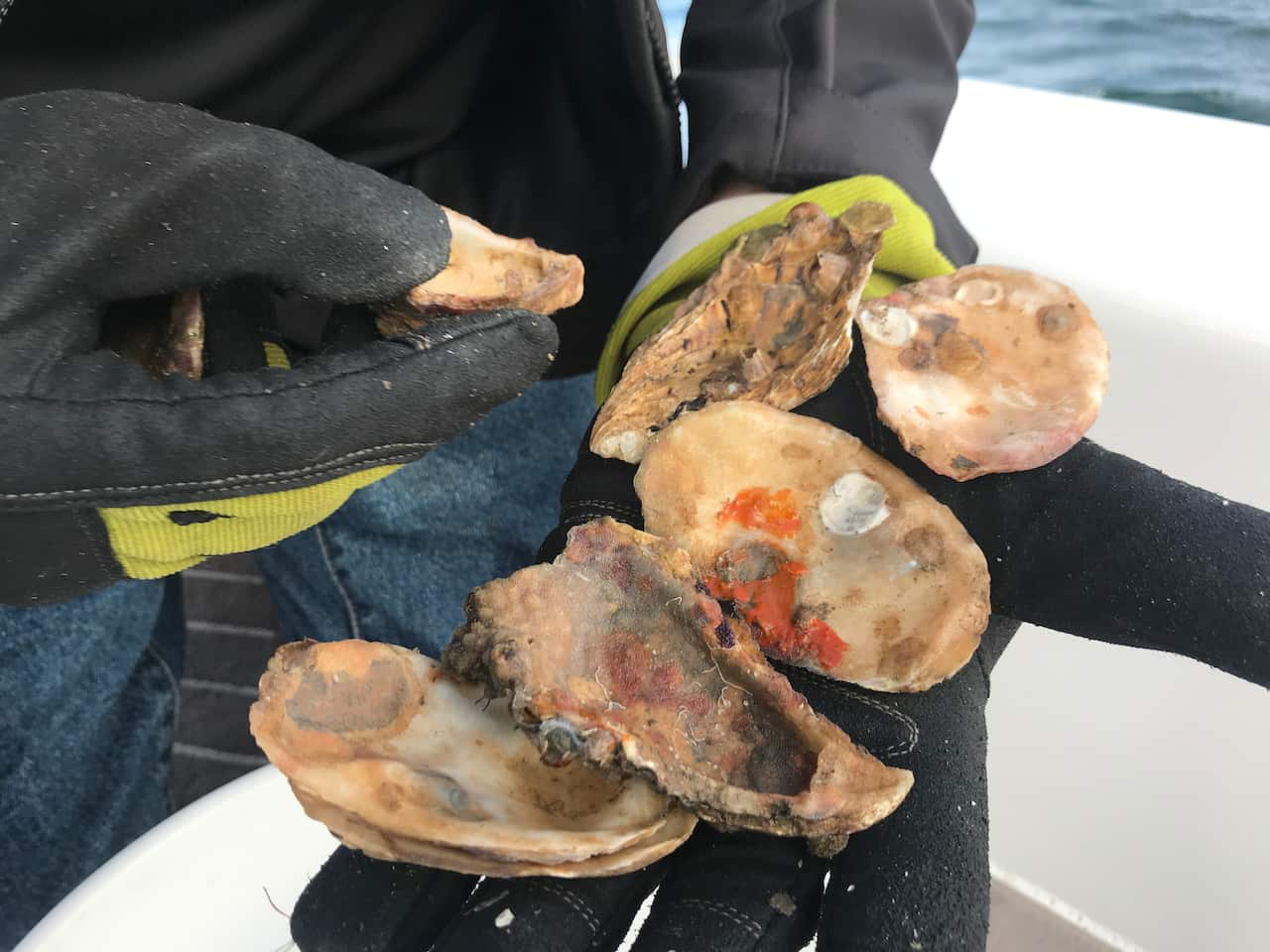 Underwater footage shows once barren and silted mudflats now have new life. Three meters down, the artificial reef is teaming with fish and baby oysters have started growing on the recycled shells.
Underwater footage shows once barren and silted mudflats now have new life. Three meters down, the artificial reef is teaming with fish and baby oysters have started growing on the recycled shells.

Oyster spat grows on recycled oyster shells after almost a year in the water on a trial restored reef. Source: Stefan Armbruster
“The number of oyster spats we have on these shells shows the reef we are putting down could be self-reproducing, so it’s really great news,” Dr Diggles said while observing oyster shells brought up from the reef.
But these oysters are not for eating.
“No, these oysters are eco-system engineers, let’s not eat them,” he said.
“We’ve lost the filter of our bay, we want to put the filter back in.”
Share

